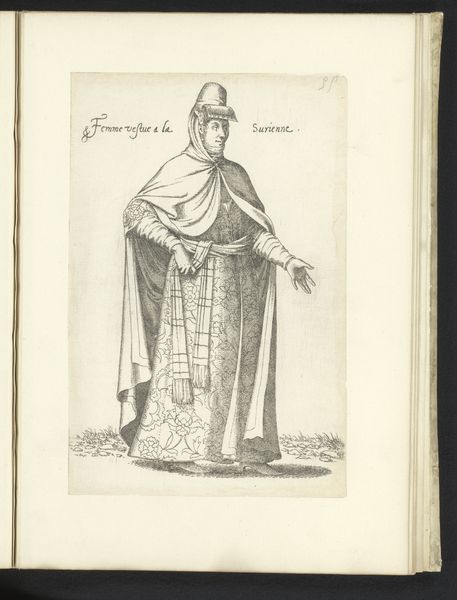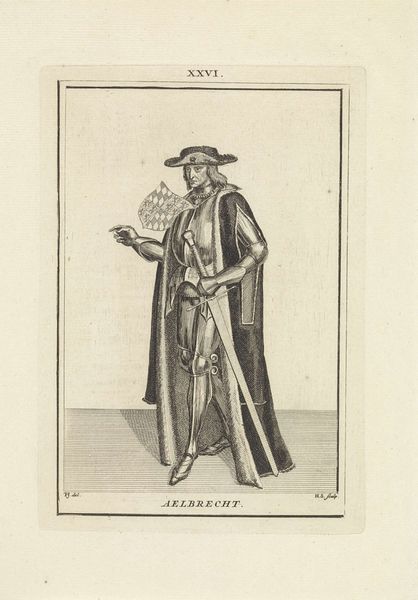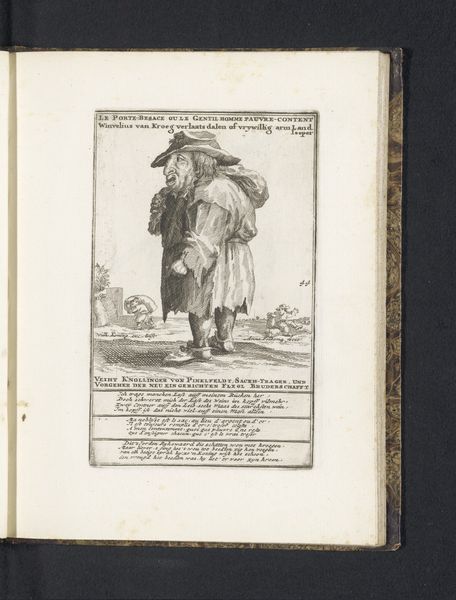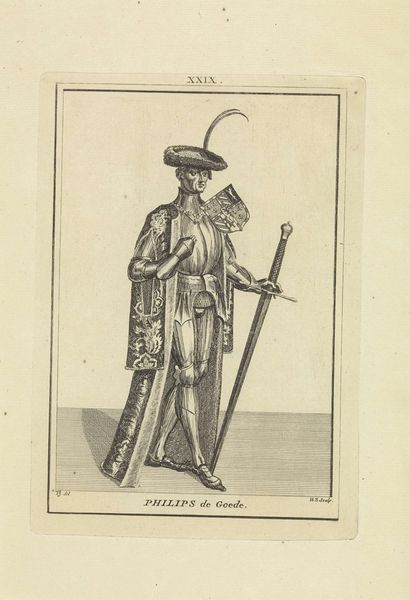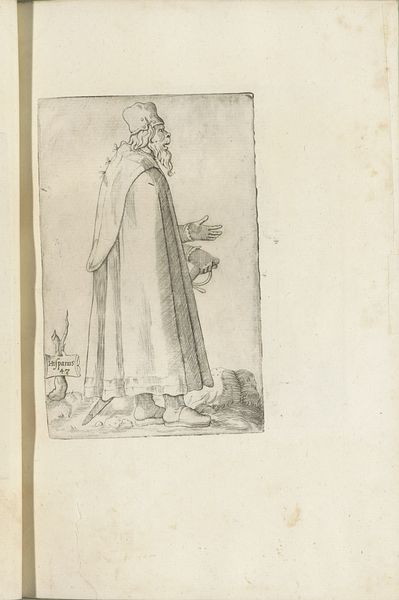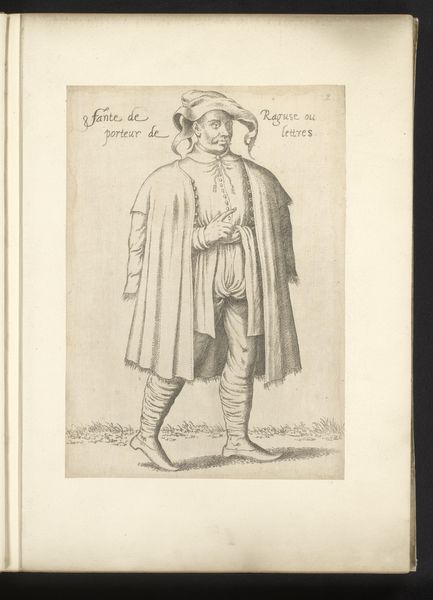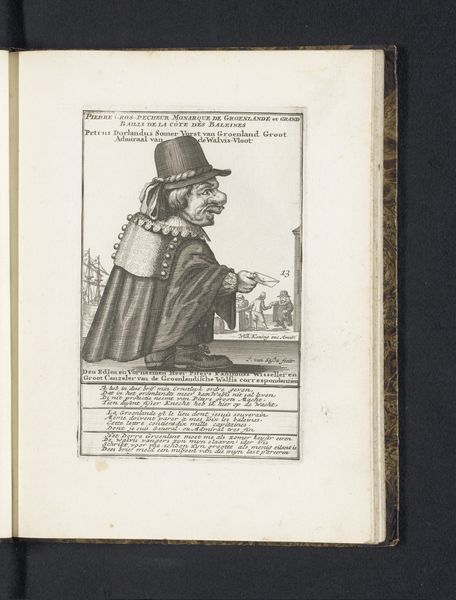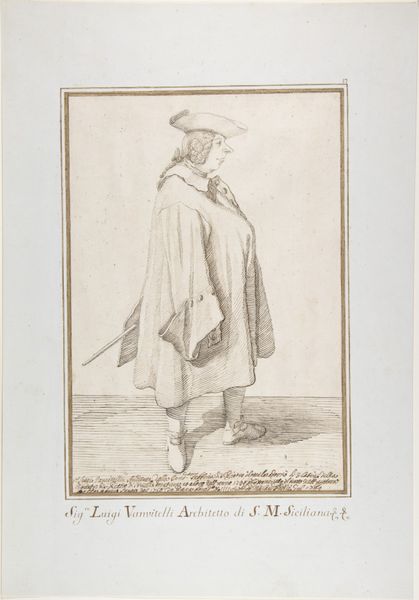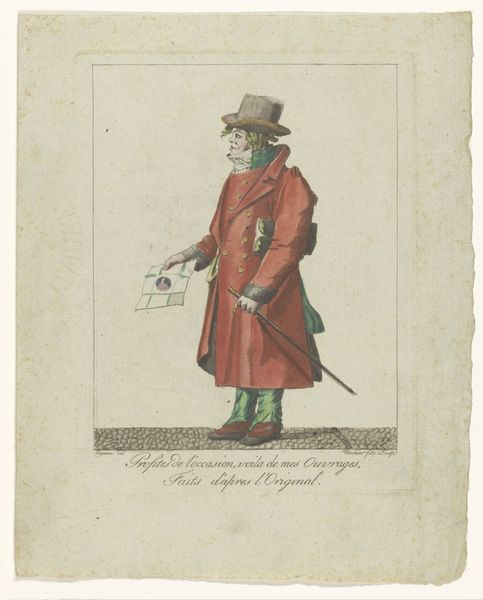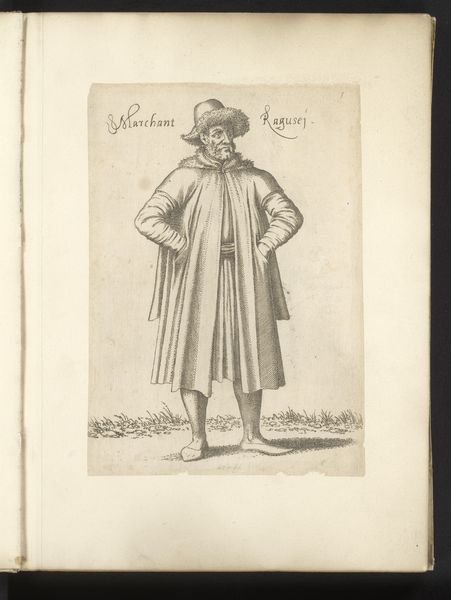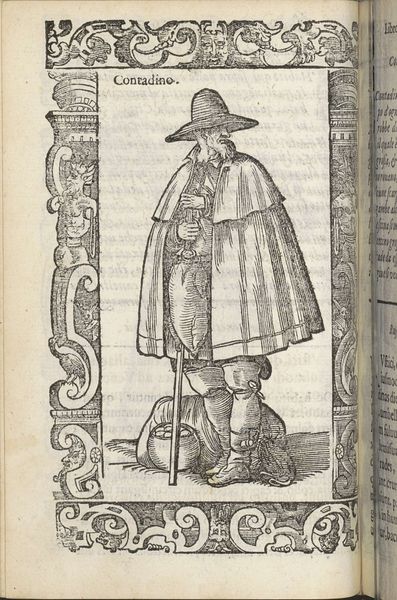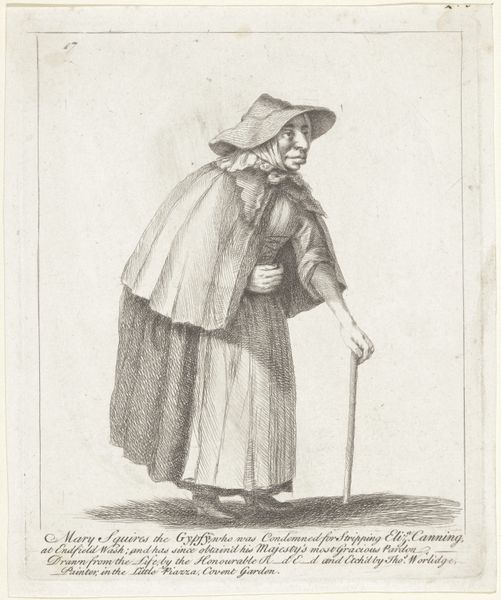
drawing, engraving
#
portrait
#
drawing
#
aged paper
#
light pencil work
#
pencil sketch
#
sketch book
#
figuration
#
personal sketchbook
#
idea generation sketch
#
sketchwork
#
sketchbook drawing
#
storyboard and sketchbook work
#
italian-renaissance
#
sketchbook art
#
engraving
Dimensions: height 98 mm, width 73 mm
Copyright: Rijks Museum: Open Domain
Curator: Let's turn our attention to this engraving entitled "Boer," which we attribute to Francesco Villamena and place somewhere between 1576 and 1624. It depicts a peasant figure. Editor: It strikes me as a fairly austere work. The thin lines creating the image on aged paper evoke a sense of humble simplicity. There's not a lot of flourish here, just a straightforward representation. Curator: Indeed. Villamena's background as a mapmaker seems relevant. Look at the precision in the rendering of the figure’s garments, the clear depiction of his simple cloak and broad-brimmed hat. This attention to detail speaks to a documentarian's eye. The inscription, "Contadino" or "peasant" below further confirms the artist's purpose. Editor: Precisely. The formal rendering makes this figure both an individual and a type. The etching could represent a general labor demographic more than any specific individual; there is a socio-historical quality to this simple engraving. Curator: Consider the tonal values, though. The careful shading gives depth and weight to the figure. The contrast between the man’s weathered face and the relatively blank cloak draw my eye directly to that facial expression. Editor: But doesn't that direct gaze challenge a purely aesthetic reading? To me, the way the figure's direct look feels less like aesthetic posturing and more like an attempt at realism—grounding this piece in the social fabric of the time. Were similar types and tropes like this accepted in Renaissance art circles at the time? Curator: Perhaps. Renaissance art, especially later in the period, displayed greater interest in daily life beyond just allegorical or biblical scenes. Looking at it again I have to admit that the interplay of line and form suggests a deliberate engagement with artistic tradition rather than merely simple realism. Editor: I suppose there’s validity to both interpretations, showcasing how cultural narratives shape not just what we see, but how we see. Curator: Agreed, a balanced synthesis perhaps leaves me seeing Villamena exploring both the physical presence of his subject and an aesthetic ideal simultaneously.
Comments
No comments
Be the first to comment and join the conversation on the ultimate creative platform.
